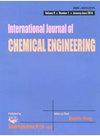木质素纳米颗粒的合成及其在水包水皮克林乳液稳定化中的应用:从甘蔗渣中提取木质素的新技术
IF 2.4
4区 工程技术
Q3 ENGINEERING, CHEMICAL
引用次数: 0
摘要
水包水(w/w)乳剂可以模拟生物环境,通过添加能够在液-液界面吸附的纳米粒子可以确保其稳定性。为了增强水包水乳剂的特性,人们一直在寻找对食品和生物医学领域有吸引力的纳米粒子新来源。因此,本研究调查了甘蔗渣木质素(一种廉价、无毒、可生物降解的聚合物)作为一种纳米粒子来源,用于含有麦芽糊精(MD)和聚乙二醇 6000(PEG 6000)的 Pickering 乳剂。纳米颗粒由碱性木质素(ALNP)和氧化碱性木质素(OLNP)制备而成,并在不同的剂量(0%、0.1%、0.3%、0.5% 和 1%,重量/重量)体系中进行了应用。纳米粒子的尺寸各不相同,OLNPs(327.8 纳米)小于 ALNPs(689.8 纳米)。与含有 ALNPs 的体系相比,含有 OLNPs 的体系显示出更好的乳化指数和更小的液滴尺寸。纳米粒子的浓度和分散相的体积会影响所研究乳液的稳定性。当 OLNPs 的重量/重量浓度为 1%、乳化指数高达 63% 时,可获得最理想的稳定效果。这些结果,加上木质素中广泛存在的官能团,使这种聚合物成为研究重量/重量乳液的潜在候选物质。本文章由计算机程序翻译,如有差异,请以英文原文为准。
Synthesis of Lignin Nanoparticles and Their Application in the Stabilization of Water-in-Water Pickering Emulsions: A New Technology for Valorization of Lignin from Sugarcane Bagasse
Water-in-water (w/w) emulsions can mimic biological environments, and their stability is ensured by adding nanoparticles capable of adsorbing at liquid-liquid interfaces. To enhance the properties of w/w emulsions, there is a search for new sources of nanoparticles that are attractive for the food and biomedical fields. Thus, the present study investigated the use of sugarcane bagasse lignin (a cheap, nontoxic, and biodegradable polymer) as a source of nanoparticles for Pickering emulsions with maltodextrin (MD) and polyethylene glycol 6000 (PEG 6000). The nanoparticles were prepared from alkaline lignin (ALNP) and oxidized alkaline lignin (OLNP), and their application was performed using different dosages in the w/w systems (0%, 0.1%, 0.3%, 0.5%, and 1%, wt/wt). The nanoparticles presented different sizes, with OLNPs (327.8 nm) being smaller than ALNPs (689.8 nm). The systems with OLNPs showed better emulsification indices and smaller droplet sizes than systems with ALNPs. The concentration of nanoparticles and the volume of the dispersed phase influence the stability of the studied emulsion. The most promising stabilization results were obtained at a concentration of 1% wt/wt of OLNPs with an emulsification index of up to 63%. These results, combined with the extensive availability of functional groups in lignin, make this polymer a potential candidate for advanced studies of w/w emulsions.
求助全文
通过发布文献求助,成功后即可免费获取论文全文。
去求助
来源期刊

International Journal of Chemical Engineering
Chemical Engineering-General Chemical Engineering
CiteScore
4.00
自引率
3.70%
发文量
95
审稿时长
14 weeks
期刊介绍:
International Journal of Chemical Engineering publishes papers on technologies for the production, processing, transportation, and use of chemicals on a large scale. Studies typically relate to processes within chemical and energy industries, especially for production of food, pharmaceuticals, fuels, and chemical feedstocks. Topics of investigation cover plant design and operation, process design and analysis, control and reaction engineering, as well as hazard mitigation and safety measures.
As well as original research, International Journal of Chemical Engineering also publishes focused review articles that examine the state of the art, identify emerging trends, and suggest future directions for developing fields.
 求助内容:
求助内容: 应助结果提醒方式:
应助结果提醒方式:


